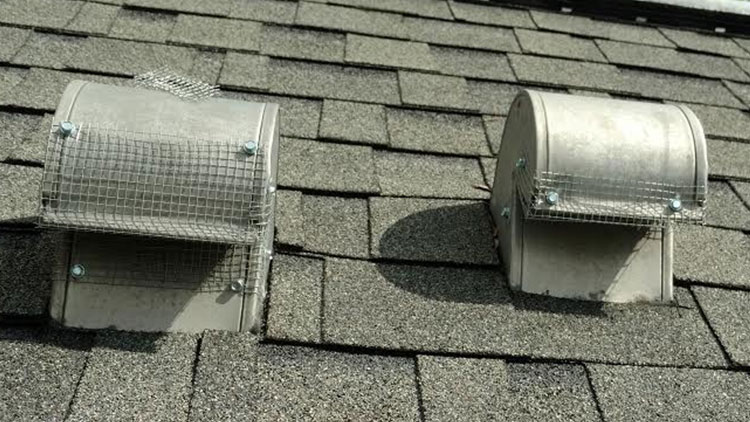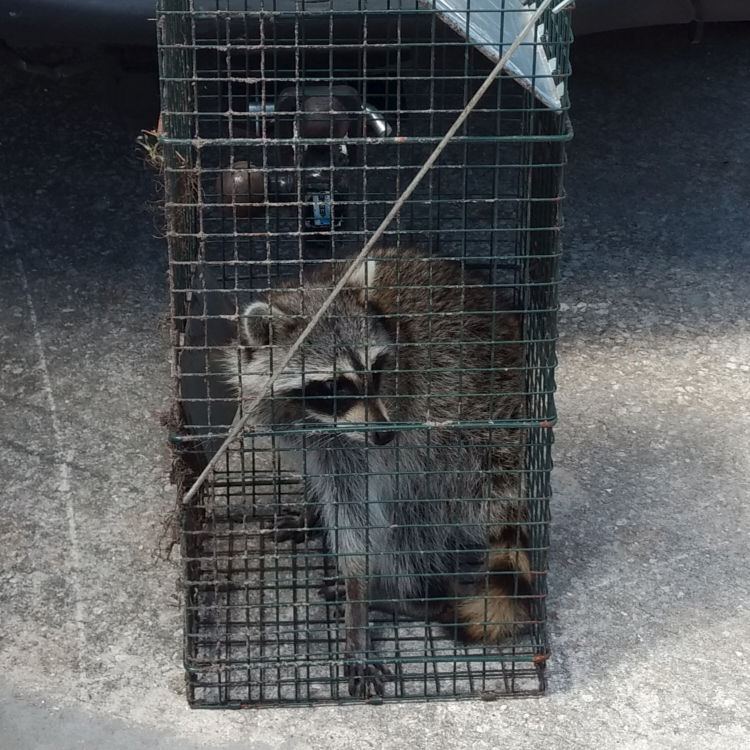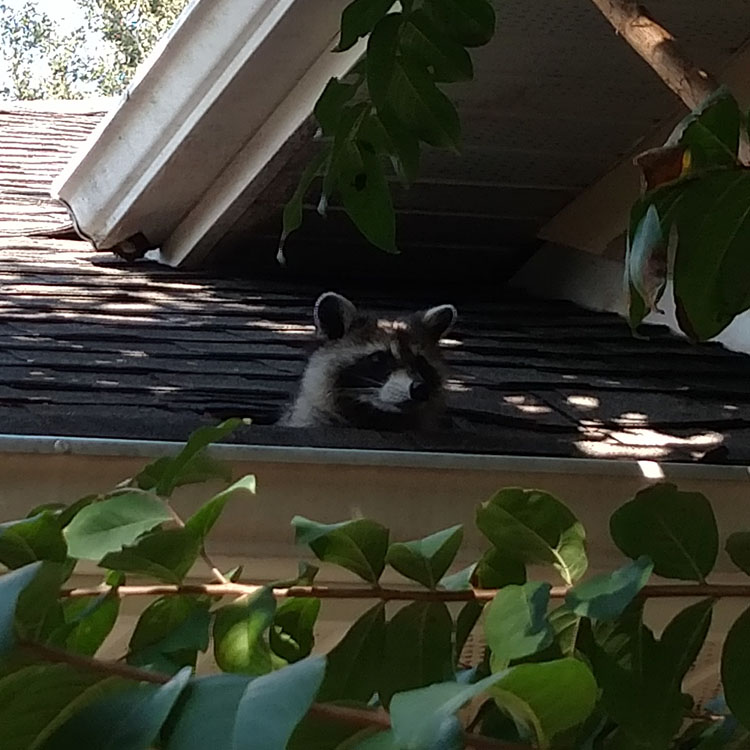Raccoons in the Attic | Signs & Evidence!
Raccoons are generally pretty easy to notice, rather they are on your property or have found their way into your attic. They are not neat and clean creatures and often leave a huge mess in their wake. You may have seen this before, as overturned trash cans is one of the most common signs of raccoon activity in an area. They also are known for digging up gardens, and stealing fruits and vegetables, often leaving them half eaten with dirt strewn everywhere. If you have a pond outside, you may even notice fish being eaten from it and left discarded on the yard surrounding it. Often times, unless you’re a night owl, you will only see the aftermath of raccoons as they do their hunting at night.

If you’re unlucky to have had a raccoon manage to get into your attic, you are probably experiencing more issues. These animals are not quiet by any means, and will make heavy thudding and dragging noises through most of the night. If you have small children in the home, these sounds can often be frightening for them. Often, raccoons sound a lot larger than they are, so it can sound like a person walking around in your attic. If a mama raccoon has gotten in with her pups, you can also hear occasional crying from the babies while the mother is out gathering food.
Rather you’re hearing noises or noticing destruction all around your property, raccoons are pretty easy to identify. Most times, this means you can identify if you have a problem relatively quickly. While you still may have difficulty catch this crafty animal, it is important to get a head start on starting to try.

Often, raccoons will choose your attic since it keeps them safe, and it is high ground which simulates their tree-burrow homes. Raccoons use your attic to seek shelter from harsh weather and from any predators in the area. Most times, it is a mama looking for a good place to have and raise her pups where they are safe from harm. Raccoon reproduction time is often in the spring, their mating time is in the late winter, so you might see a significant increase in raccoon activity during these times.
Since raccoons are large mammals, they generally need a larger space to enter the home through. However, raccoons are also relatively strong animals and can pull or pry open spots for them to get into, commonly you can see them do this with soffit. Less common, but still not something unusual, is a raccoon using an open garage door as an access. Once in the garage they can find a way to the attic, or if your garage is unused, they may even stay in there.

One of the most common places that raccoons gain entry is a roof return, this is where soffit meets roof in a dark corner. Typically, these already have a small gap in them, which raccoons pull further back to squeeze into. They will normally have one main access point, and this can be identified by black rub marks that they leave behind when wiggling their way in.
Many times, if you have low hanging branches close to your roof it can make raccoon access much easier. They will use these to jump onto your roof and from there find a spot to get in. However, they can also climb your walls to gain access to the roof.